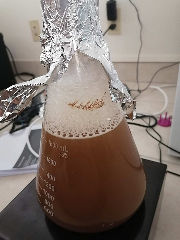Andy Brosius
Active Member
- Joined
- Apr 5, 2020
- Messages
- 43
- Reaction score
- 7
I recently harvested (washed) some S-04 from a batch of robust porter. I've created a starter and saw a bit of activity overnight. I've taken it off the stir plate, will let it sit for about 12 hours, then will cold crash overnight before my brew day tomorrow.
My question is: how do I know how much to pitch? I know the only way to know for certain is to count under a microscope, but what are the general guidelines here?
Thanks!

My question is: how do I know how much to pitch? I know the only way to know for certain is to count under a microscope, but what are the general guidelines here?
Thanks!




